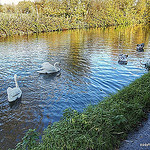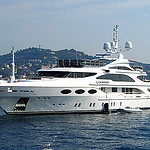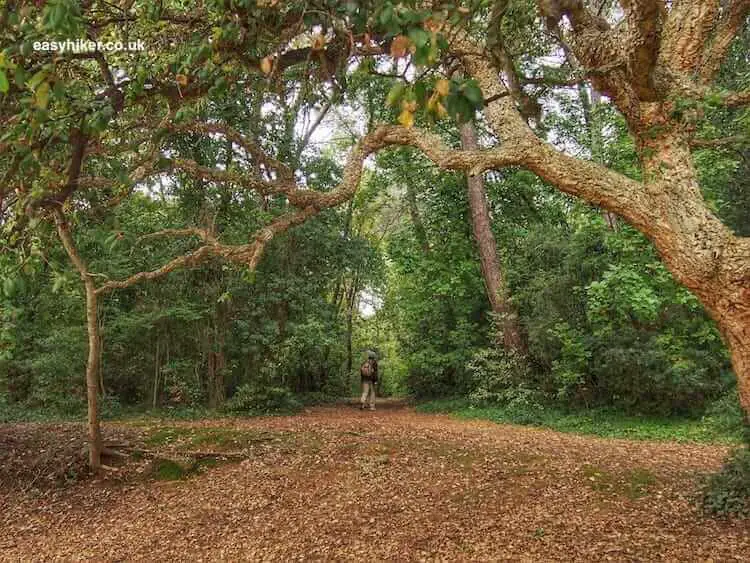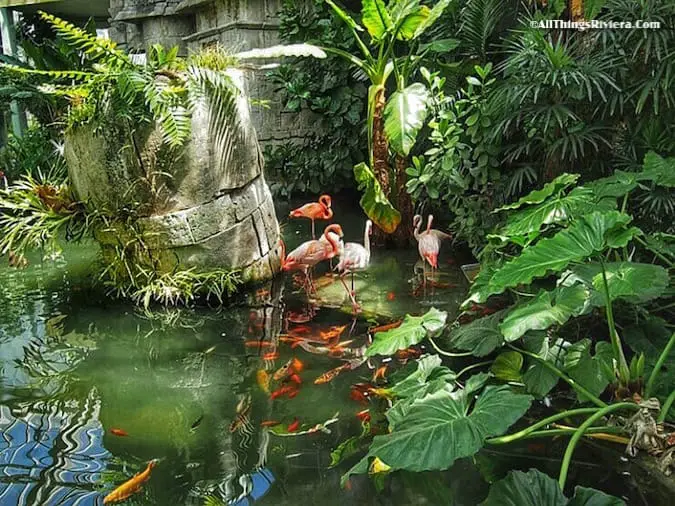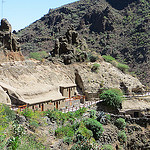Having familiarised ourselves with the style and the atmosphere of the bourgeois 8th arrondissement of Paris (the neighbourhood around the Champs Elysees), we are now ready to explore the other quartier that plays a key role in Marcel Proust’s In Search Of Lost Time: the Faubourg St Germain, the part of Paris where, in the late 19th century, most of the French nobility had their homes.
For the upstart socialite, the son of a self-made man and a Jewish mother, this was Marcel Proust’s Field of Dreams.

The Faubourg St Germain roughly covers a square-shaped area between the Invalides complex in the northwest and the Bon Marché department store in the opposite, south-eastern corner.
If you want to continue straight from the spot where we completed last week’s walk, you can proceed to the Faubourg on foot, an interesting walk in its own right if you are new to Paris, but if you want to preserve your energy, you can also take a bus or the Metro.
Either way, get yourself to the metro station Solferino on Rue Saint Dominique because this is where today’s walk begins.
In Search of Proust’s Field of Dreams
Turn right into Boulevard Saint Germain, right into Boulevard Raspail and immediately right again into Rue du Bac.
At no. 43 Rue du Bac, the novel informs us, the character of Doctor Cottard has lived for his entire adult life. This is, as far as I am aware, the only residential address that is specified in the book.
Considering that Doctor Cottard is a relatively minor character, this is so odd that it must be relevant in some way, which is why both the building and Cottard deserve a second look.

The muscular “Hausmannian” style of the apartment building (the style was named after the municipal strongman whose development plan changed the face of Paris) looks out of place in a quartier which is dominated by older, aristocratic townhouses.
Strictly speaking, at any rate, the building only stands in the borderlands of the Faubourg. Cottard is a prosperous, middle-class professional who rubs shoulders with the aristocracy (topographically as well as socially: he is a guest at some of their parties which is how we meet him in the novel), but, like his domicile, is forever looking from the outside in: he is, somehow, part of the whole without properly belonging.
Proust made him a successful doctor – exactly what Proust’s father was. I think that is relevant, too.
Further down the Rue du Bac, on the corner with Rue Grenelle, is the spot where the Faubourg proper begins.
The quartier, full of historically important landmarks such as the Fontaine des Quatre Saisons, …

… goes back to the 18th century.
Following the death of Louis XIV, the French nobility returned from Versailles to Paris only to find that their ancient residential quarters had become overpopulated and polluted in the period of their absence.
Looking for unspoilt new pastures, they soon found the perfect candidate. Roughly 200 palaces were built on undeveloped land to the east of Louis XIV’s new military hospital, the Invalides, and roughly half of these are still standing today.
One fairly safe way of identifying the townhouses from this period is the size of their entrance gates: these gates had to be large enough to let a horse-drawn carriage pass through into the walled courtyard.
After the French Revolution, more open-plan designs were preferred, and the old style went quickly out of fashion.
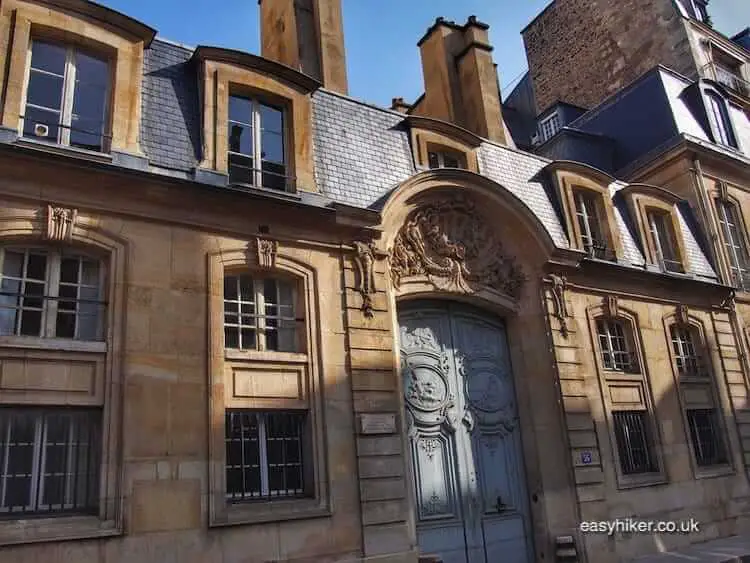
Today, the former palaces are housing government offices …
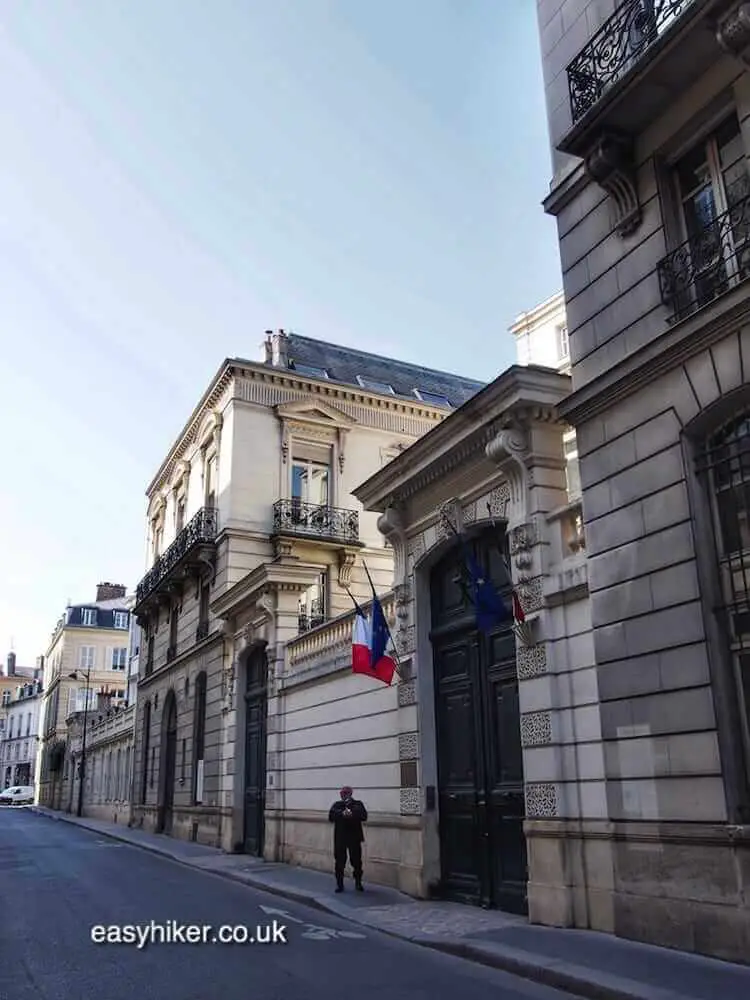
… cultural institutions …
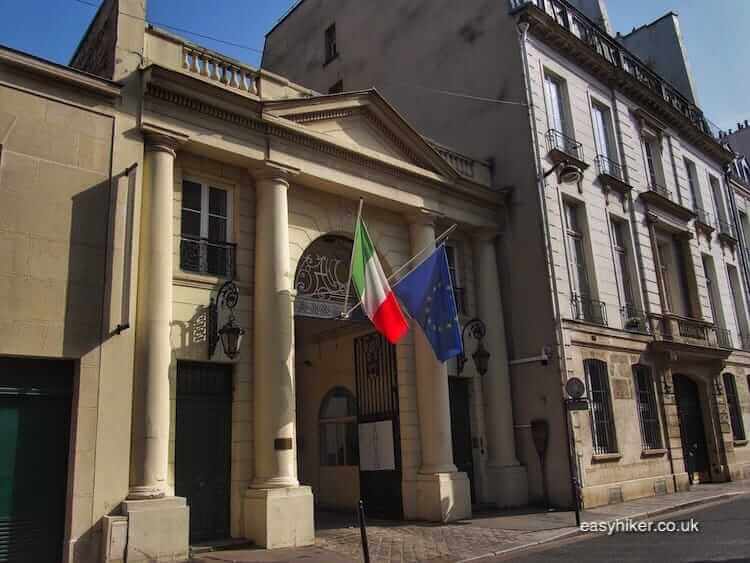
… foreign embassies or the HQs of fashion houses.
At the time, the mansions would have stood in splendid isolation, often with large gardens around them. Today, residential houses of a lower order have filled up the spaces in between, but not everywhere – because occasionally, the townhouses were also built back-to-back in small clusters.
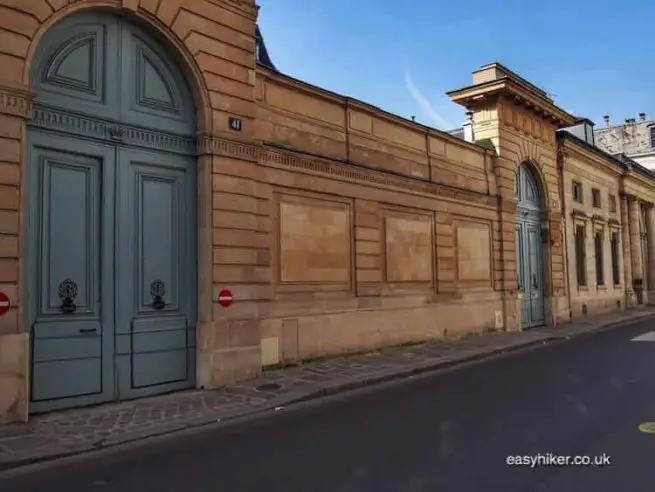
We do not know which houses inspired Proust who, as a man of charm and wit (the tickets for well-bred commoners into the highest levels of society), would have been a frequent guest of many literary salons that are described in the novel.
We can only guess, because In Search of Lost Time provides mood and atmosphere instead of street names.
One exception is the Rue de la Chaise: this is where close relatives of the Duchess of Guermantes live (“the other Guermantes”) and where the Chaussepierres give their little artistic parties that “go off quietly in the obscurity of the Rue de la Chaise”.
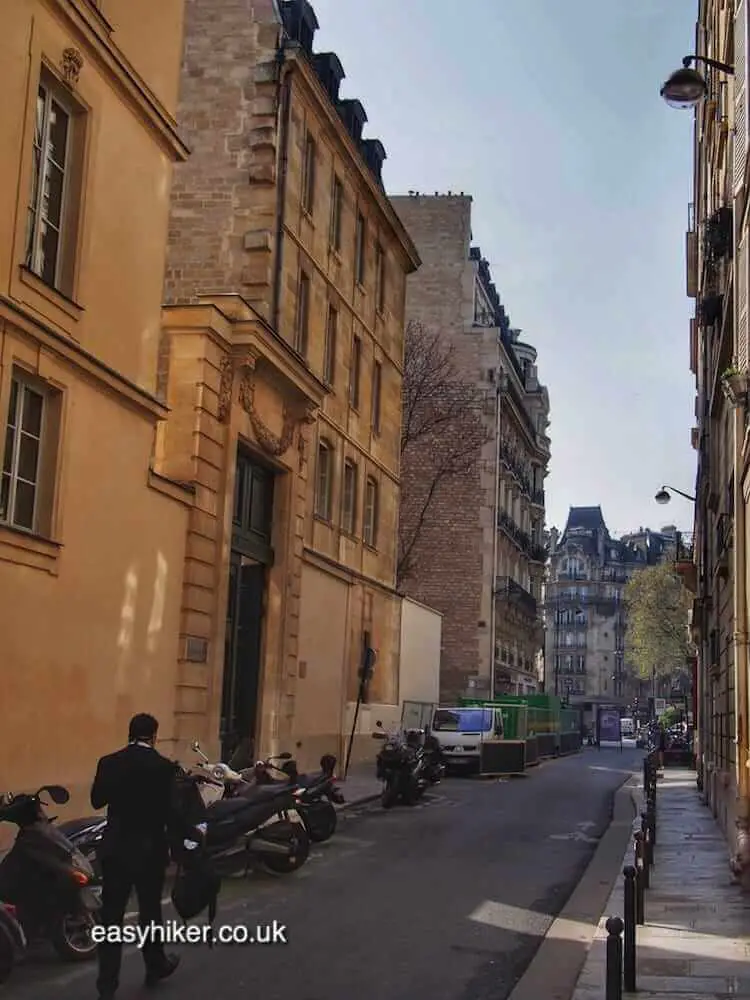
But whatever palace you may be passing on the walk, they all have one thing in common: you cannot see very much from the outside.
This stands in marked contrast to the buildings of the 8th arrondissement that actively engage the passers-by (flaneurs were also an invention of the late 19th century), generally by trying to impress or even intimidate them through their massive scale and grandeur.
The 18th century mansions, conversely, treat the outside world with aloof indifference. High walls – such as those that surround the Palais Matignon – …
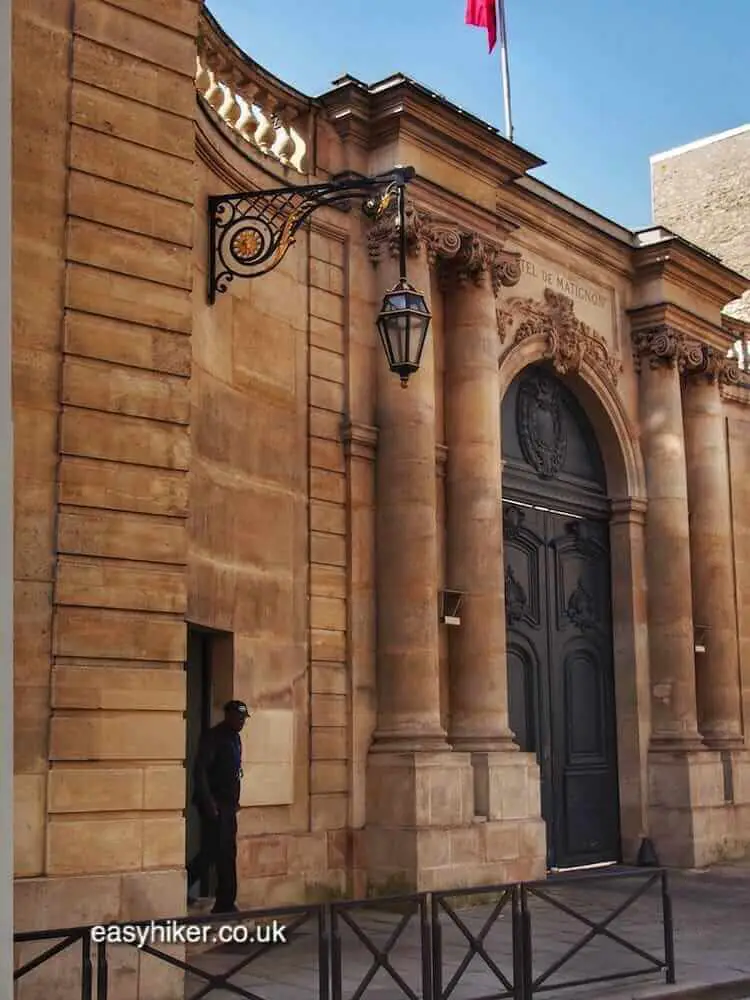
… make sure that any grandeur stays inside.
Every detail and architectural feature that makes these palaces beautiful is reserved for the initiated few, the people who are at home here or who have been invited – as we can see when we take a peak into the courtyard of the Matignon, today the residence of the Prime Minister of France.
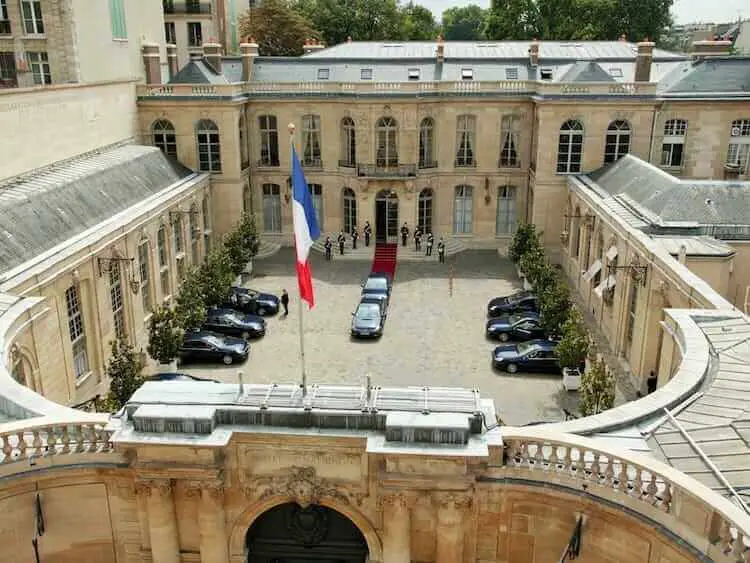
The contrast is even more brutal at the Hotel Rochechouart: from the street level, it looks downright hostile …

… but once you are inside the compound, it feels gentle and sweet and even includes a lovely garden.
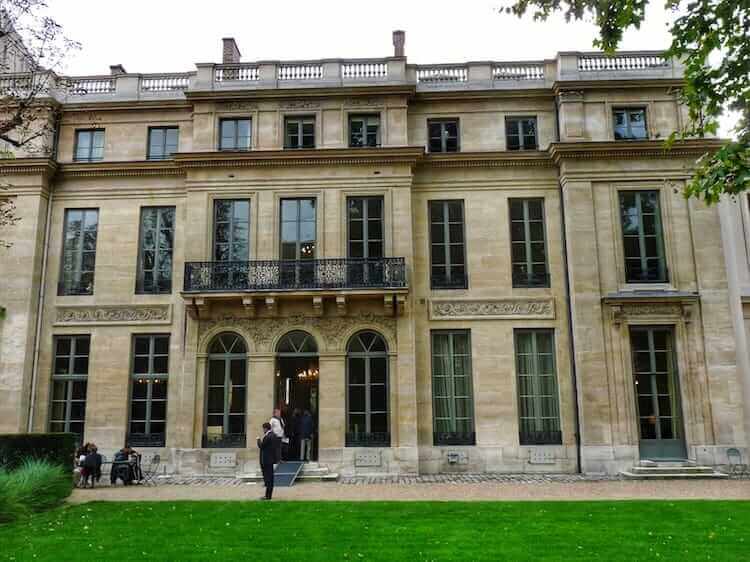
The townhouses of the Faubourg are the architectural equivalent of all those jewel-encrusted salt cellars and decorative paintings of classical mythology which are so typical for their period.
In fact, works of art that are designed to keep out the many so the few can more fully taste the joy of exclusive access were pretty much the standard for any period before the industrial revolution shattered the feudal foundations on which this system was built.
In his novel, Proust employs an entire orchestra of instruments, themes and motifs to provide this transition with a soundtrack, and the changing topography of Paris is one piece of this orchestra.
But In Search of Lost Time also tells the story of how the frontiers between the worlds of the nobility and the bourgeoisie were beginning to blur – and Proust, a creature of the Belle Epoque if ever there was one, was far too intelligent not to realize the extent to which he himself, a commoner of Jewish ancestry, had benefitted from the social progress of the late 19th century.
Proust’s artistic tastes were also a good deal less orthodox than those of his narrator, and he was a lifelong admirer of the painter Jean Béraud, garish chronicler of the Belle Epoque.
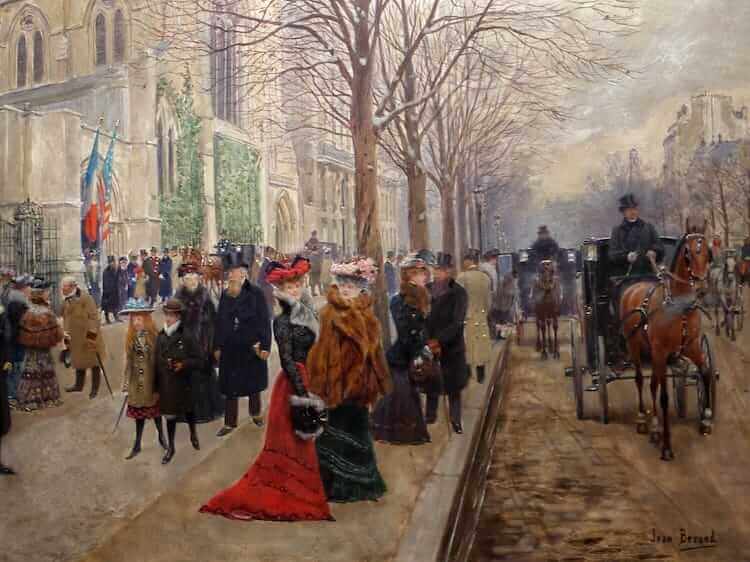
If you read In Search of Lost Time, you may even discover parallels between those two. Proust’s novel is full of surprises if you are willing to make the leap.

